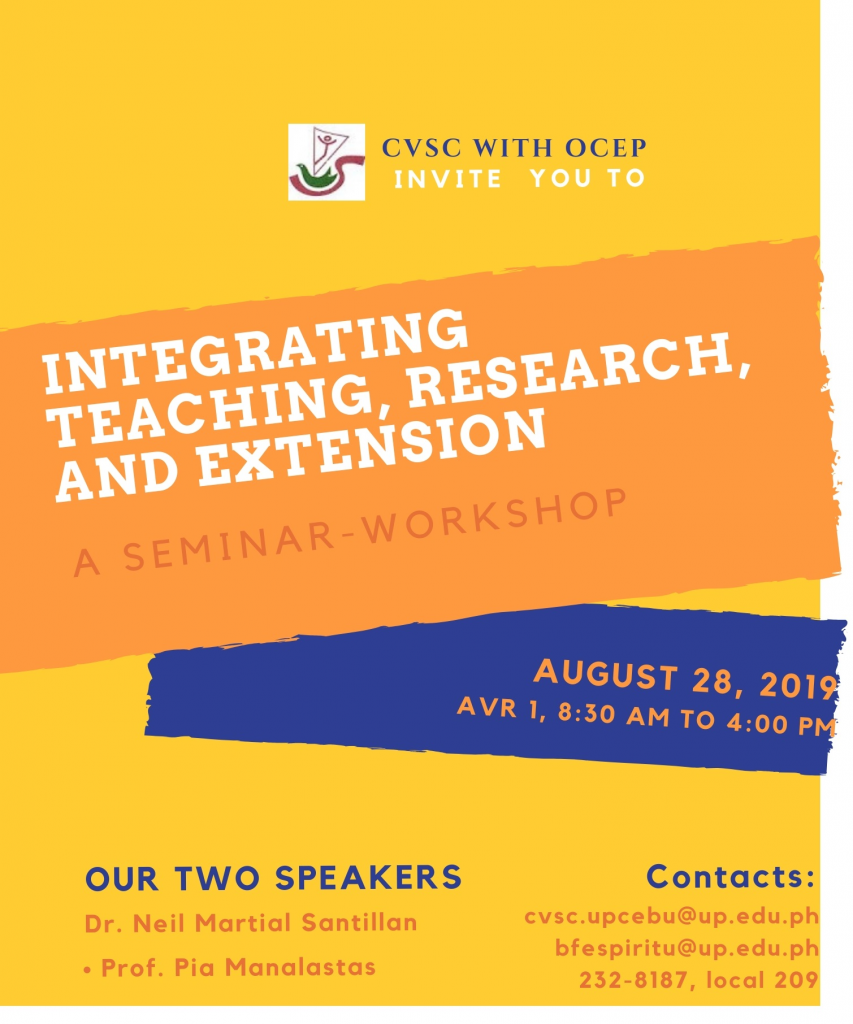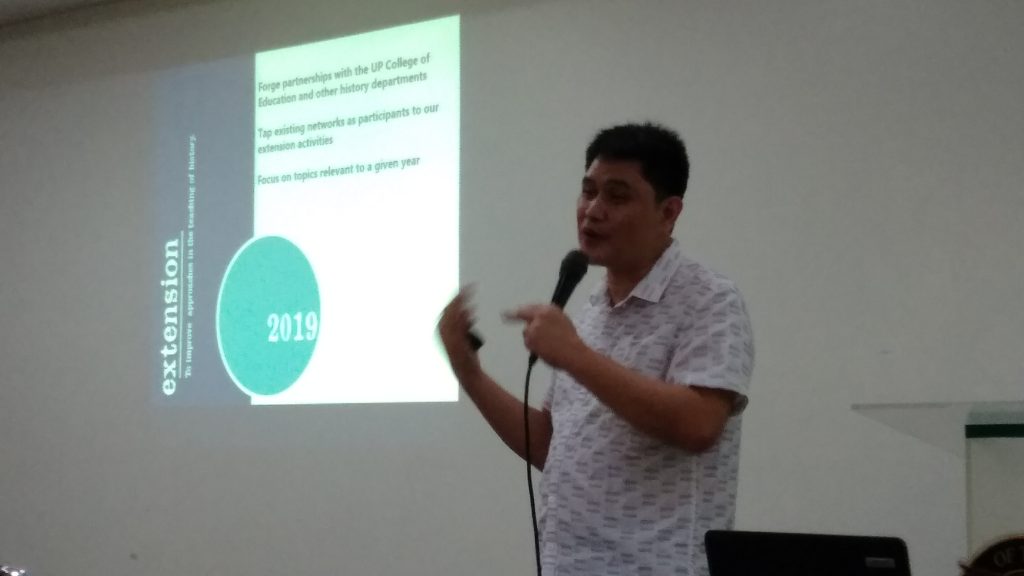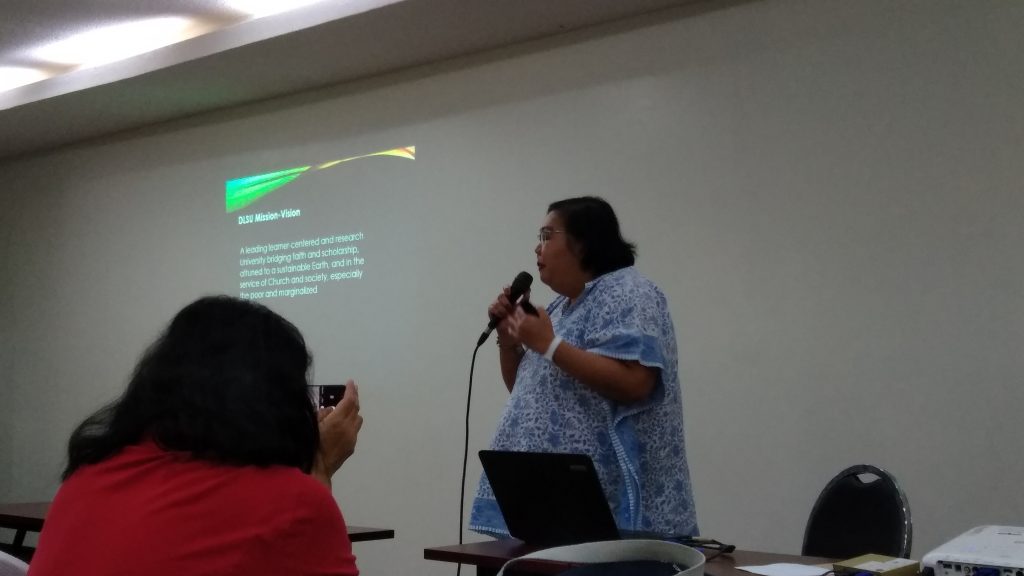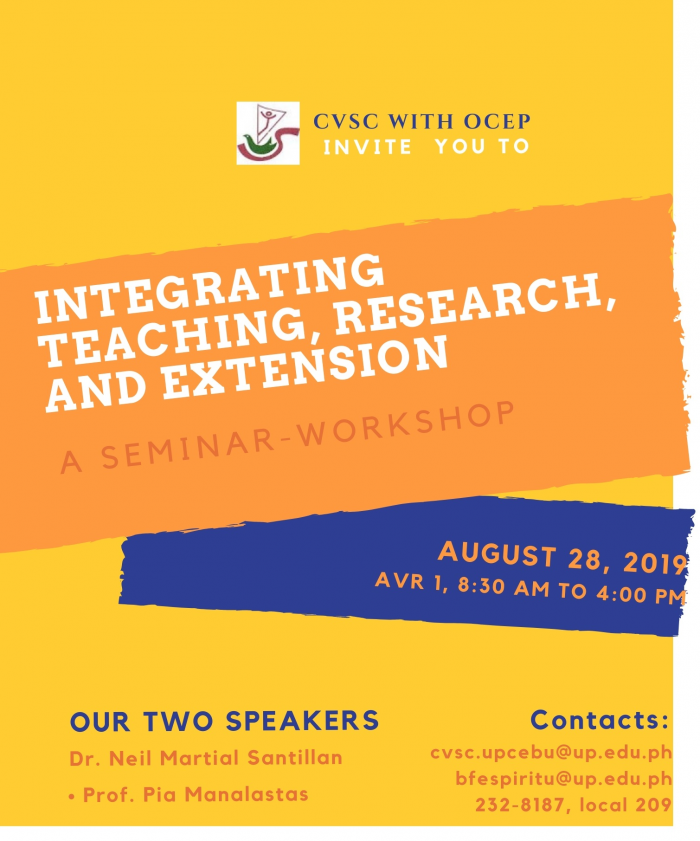The University of the Philippines is known for its ability to transform lives through education and is also a paragon for worthwhile researches that shape the nation. But being a national university, do we have the ability to integrate the cores of education, research, and the ability to serve the nation?
This is the goal of the Academic Program Improvement Activity “Integrating Teaching, Research, and Extension organized by the UP Cebu Office of Continuing Education Pahinungod and the Central Visayas Study Center. Bringing the bright minds of Dr. Neil Martial Santillan and Prof. Pia Manalastas, the faculty and REPS of UP Cebu listened to a number of best practices that clearly shows the praxis between the core UP aspects.

Dr. Santillan, being the first speaker, started by opening the space to possibilities of research praxis through the works of UP Diliman Department of History. Their department has been doing a multitude of researches in history by involving specific communities. The outcomes of the research are now used by the professors in the department in teaching the students. They also have continuing programs that does not only involved the students and the faculty of the department but also the students and the community in UP Diliman. They engaged in history walks, film screening, university-wide lectures, and collaborative exhibits that targets other departments as well.

The creation of UP’s Pahinungod in which Dr. Santillan looks up to when it comes to extension work was created to create a service space for the teachers to connect the community and their students to create an educational linkage that would enrich the University’s national goals. Pahinungod, which was for many instances, was tried to be dissolved, proved to be one of the institutions that molded many teachers in volunteer work. The institution was a central point of a UP teacher’s integration of his/her own education and the education of their students within the community, a “gurong pahinungod”.
UP Cebu can be a central point for Pahinungod in Central Visayas. There is no established Gurong Pahinungod Program yet in these regions and having it in Cebu would be a great help to counter historical revisionism and correct community misconception.

Sustainability and community service is part of the business sector, according to Prof. Manalastas. The idea of CSR or corporate service responsibility should be engrained not only on the undergraduate curriculum but also in the high school business track curriculum. There is a need to inculcate in the minds of the students the values needed for responsible and ethical leadership. These values are most important in a leadership career such as in business.
Service-learning, which is a pedagogy that utilizes service projects, allows the students to create and innovate services that are useful for the target community. This pedagogy involves the faculty and the students in direct service, indirect service, advocacy, and community research works activities. The students undergo a three cycled framework of learning which starts with seeing and experiencing the situation, analyzing and reflecting from the experience, commit to a solution, and take action to implement the solution. The framework aims to help the students analyze problems in the community that they can slowly solve by engaging themselves and the community in a solution. A number of cases already showed how service-learning impacted the lives of the students that some even rechanneled their efforts to a more service-centered career.
Do we have service-learning here in UP Cebu? Yes, we have. In the classes of Dr. Phoebe Sanchez, especially in KAS 1, praxis is always central to the study. Many of her classes have basic mass integration, allowing the students to live the lives of the people in the community and to look for solutions that may help these communities. A lot of these practices may put Dr. Sanchez in scrutiny, especially in the eyes of many laypeople, but this praxis allows the students to open their minds to the realities of those who are suffering in the society. Maybe, the UP practice is more invasive, perhaps very intensive, but it allows our students to anchor their feet on the ground and always remember their goals not only for themselves but for the society who puts hope in them.
Education is also a sector that UP has been tapping almost immediately. Dr. Aurelio Vilbar has been conducting international service-learning with Otemae University and has been key in encouraging Japanese exchange students to learn here in the Philippines. But this is not only the off-shoot of Dr. Vilbar’s hosted service-learning. The Japanese students are exposed and have to keep an open mind about the Japanese occupation in the Philippines through the storytelling of their counterpart the Filipino students. The students taught them about the history that most Japanese students do not know of and they have to accept it because it is the reality of the nations that their Japanese soldiers occupied during the second world war. The exchange of historical knowledge is not the only activity there is. Both Japanese students and Filipino students exchange cultural traditions. Patiently, each group would teach the other traditional qualities in each nation. The activity does not only widens the world view of international students, but it also widens the view of the Filipino students.
These examples only tell us that UP already internalized the idea of service and extension in the core of education and research. What we lack is to increase its visibility and formalize the method in our curriculum.
The program ended with the participants pitching their plans in moving forward in integrating education, research, and extension in UP Cebu. They came up with plans and suggestions in strengthening the three core strands in UP.

